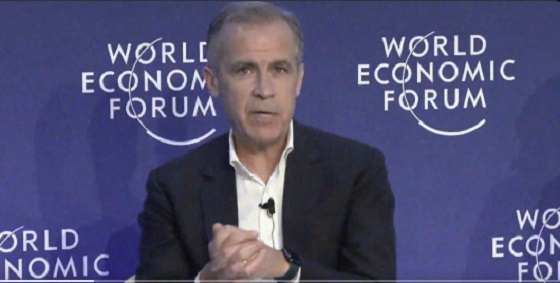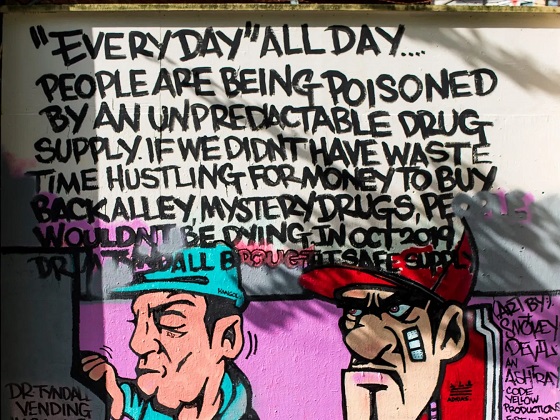Business
Pay increase for Governor General since 2019 is more than average Canadian annual salary
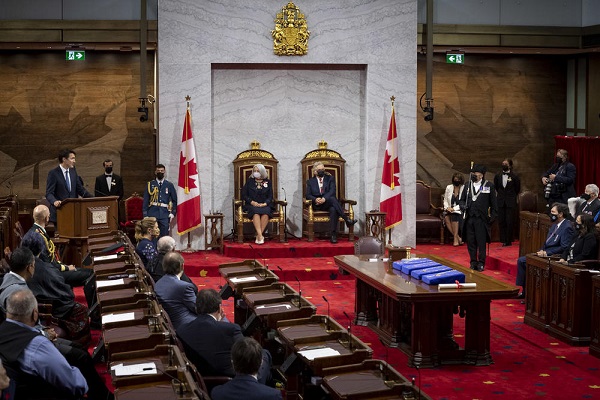
From the Canadian Taxpayers Federation
By Ryan Thorpe
The salary for Canada’s Governor General has skyrocketed by just over $75,000 since 2019. Meanwhile the average annual salary among all full-time workers in Canada was roughly $70,000 in 2024
Governor General Mary Simon pocketed a $15,200 pay raise this year, bumping her annual salary for 2025 up to $378,000.
This marks Simon’s fourth pay raise since she was appointed governor general in 2021, meaning she now makes $49,300 more than when she took on the role.
“Can anyone in government explain how Canadians are getting more value from the governor general, because her taxpayer-funded salary just increased by more than $1,200 a month,” said Franco Terrazzano, CTF Federal Director. “The automatic-pay-raise culture in Ottawa is ridiculous and politicians and bureaucrats shouldn’t expect more money every year just because they’re on the taxpayer payroll.”
The Canadian Taxpayers Federation confirmed Simon’s current salary and the details of her latest pay raise with the Privy Council Office.
“For 2025, the Governor General’s salary, which is determined in accordance with the provisions of the Governor General’s Act … is $378,000,” a PCO spokesperson told the CTF.
The federal government hiked the governor general’s annual salary by $75,200 (or 25 per cent) since 2019.
Meanwhile, the average annual salary among all full-time workers in Canada was roughly $70,000 in 2024, according to Statistics Canada data.
“Canadians can’t afford to keep paying more for a largely symbolic role,” Terrazzano said. “The governor general already takes a huge taxpayer-funded salary and she should show leadership by refusing this year’s pay hike.”
On top of the $378,000 annual salary, the governor general receives a range of lucrative perks, including a taxpayer-funded mansion, a platinum pension, a clothing budget, paid dry cleaning services and lavish travel expenses.
Former governors general are eligible for a full pension, of about $150,000 a year, regardless of how long they serve in office.
Even though Simon’s predecessor, Julie Payette, served in the role for a little more than three years, she will receive an estimated $4.8 million if she collects her pension till the age of 90.
The CTF estimates that Canada’s five former governors general will receive more than $18 million if they collect their pensions until the age of 90.
Even after leaving office, former governors general can also expense taxpayers for up to $206,000 annually for the rest of their lives, continuing up to six months after their deaths.
In May 2023, the National Post reported the governor general can expense up to $130,000 in clothing during their five-year mandates, with a $60,000 cap during the first year.
Simon and Payette combined to expense $88,000 in clothing since 2017, including a velvet dress with silk lining, designer gloves, suits, shoes and scarves, among other items.
Rideau Hall expensed $117,000 in dry-cleaning services since 2018, despite having in-house staff responsible for laundry – an average dry cleaning tab of more than $1,800 per month.
In 2022, Simon’s first full year on the job, she spent $2.7 million on travel, according to government records obtained by the CTF.
Simon’s travel has sparked multiple controversies, including a $100,000 bill for in-flight catering during a weeklong trip to the Middle East, and her $71,000 bill at IceLimo Luxury Travel during a four-day trip to Iceland.
“Platinum pay and perks for the governor general should have been reined in a long time ago,” Terrazzano said. “The government should stop rubberstamping pay raises for the governor general every year, end the expense account for former governors general, reform the platinum pension, scrap the clothing allowance and cut all international travel except for meetings with the monarchy.”
Table: Annual Governor General Salary, per PCO data
|
Year |
GG Salary |
|
2019 |
$302,800 |
|
2020 |
$310,100 |
|
2021 |
$328,700 |
|
2022 |
$342,100 |
|
2023 |
$351,600 |
|
2024 |
$362,800 |
|
2025 |
$378,000 |
Business
Losses Could Reach Nearly One Billion: When Genius Failed…..Again
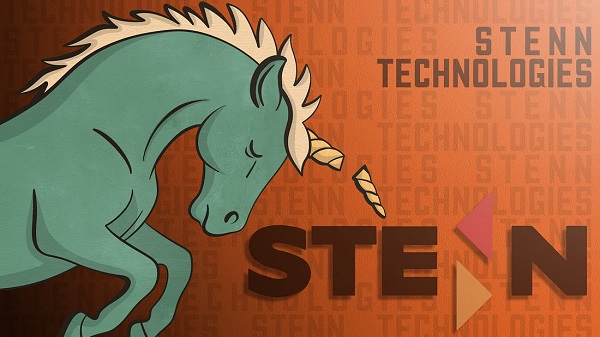
Illustration by Daniel Medina
By Eric Salzman
The smartest guys in the room fall for the same scam twice in less than 5 years
THE SCHEME: Fraud and Money Laundering
THE COMPANY: Stenn Technologies
Racket News is a reader-supported publication.
To receive new posts and support my work, consider becoming a free or paid subscriber.
THE NEWS: For the second time in five years, a scam involving sexing up a boring, centuries old financing business blew up in the faces of some of the world’s largest banks
You know the old saying. Fool me once, shame on you. Fool me twice…
In December, “fintech” supply chain financier Stenn Technologies and its subsidiaries Stenn Assets UK Ltd and Stenn International Ltd, collapsed, spanking investors and lenders such as Citigroup, Nexis, BNP Paribas, HSBC and private equity firm Centerbridge. Just a month prior to the blow-up, Stenn was viewed as a fintech unicorn with a robust $1 billion book of business, poised for strong growth.
As we’ve seen time and again, a unicorn can quickly die when a company’s business model screams fraud to anyone bothering to look.
Stenn Technologies claimed to use artificial intelligence and state of the art technology to analyze credit and money laundering risk in order to turn a low margin, supply chain financing business into an awesome, high return, low risk securitized product.
Here’s a quick explanation of supply chain financing:
1. A company delivers its product to a buyer and the buyer promises to pay in a few months’ time, creating an accounts receivable.
2. The company that has the accounts receivable sends it to the supply chain financier (Greensill Capital or Stenn Technologies).
3. The supply chain financier pays the company cash for the receivable minus a discount which is another business practice called factoring.
4. The buyer pays the financier the full amount of the receivable on the due date.
Supply chain financing is nothing new. It was probably around when Marco Polo set out for the Orient.
If it sounds boring, that’s because it is, or at least is supposed to be. Lex Greensill’s Greensill Capital changed that a decade ago.
Through fancy structuring, as well as four private jets, Greensill created a byzantine circular loop where money flowed around the world, much of it to Greensill favorites like steel maker Sanjeev Gupta and then back again. The operation was continuously funded by either GAM, Credit Suisse, SoftBank as well as Greensill’s own German bank, Greensill Bank AG. After a while, as more money poured into Greensill from eager investors, the company began to essentially just lend money out, mostly to Gupta while calling the transactions “future receivables.”
Greensill Capital collapsed under the weight of fraud in 2021, costing its big investors mentioned above billions. Matt reported on the story here in 2021.
Greensill’s receivable notes (the fancy structuring) were insured by a number of insurers, the biggest being Japanese insurer Tokio Marine. The insurance made investors comfortable because, if Tokio Marine insured it, the notes have to be money good, right?
Wrong.
At one point, Tokio had nearly $8 billion of exposure to Greensill deals. How insurers got comfortable with insuring receivables to a blizzard of shell companies that all seemed to point back to Gupta and Lex’s pockets is anyone’s guess, but when Tokio finally did a good look under the hood, they cried insurance fraud and Greensill came crashing down. Credit Suisse investors alone lost $10 billion.
At this point, we need to hear from Lt. Commander Montgomery Scott, better known as Scotty.
So now, we’re at the shame on you portion of the story.
Astoundingly, Stenn Technologies was able to pull off a similar scam just a couple of years later, posing as a fintech company, supposedly using the latest in technology to do global supply chain financing faster and better than everyone else in the business.
The victims are new, but given the high publicity of Greensill’s failure, you’d figure they would catch on.
According to Bloomberg News, “Stenn’s main backers were Citigroup Inc., BNP Paribas SA, Natixis and HSBC Holdings Plc while Barclays Plc, M&G Plc and Goldman Sachs Group also backed the transaction.”
Private equity firm Centerbridge invested $50 million in capital and valued the company at $900 million in 2022.
In 2022, TechCrunch described the secret sauce that Stenn was supposedly using to bring a 13th century business into the modern age.
Stenn — which applies big data analytics, taking a few datapoints about a business (the main two being what money it has coming in and going out based on invoices) and matching them up against an algorithm that takes some 1,000 other factors into account to determine its eligibility for a loan of up to $10 million; and on the other side taps a network of institutions and other big lenders to provide the capital for that financing.
Perhaps this multi-factor algorithm was super cool when they showed it to investors and lending partners. The only problem was Stenn, in the words of a business crime attorney who spoke to Bloomberg, “has all the hallmarks of both fraud and money laundering.”
Greensill might have been a bit hard to figure out with large, respected insurance companies insuring their notes.
But anyone who took the time to investigate Stenn Technologies by simply looking at the data they pumped out to investors weekly would have seen the scheme for what it was.
While it appears the previously mentioned institutional investors didn’t bother to investigate, Bloomberg did and the results were darkly hilarious.
Some of Stenn’s biggest suppliers were tiny companies in Thailand and Hong Kong with little in common yet corporate filings for all of them list the same Russian name as a backer. One in Singapore was accused by the U.S. of enabling payments to Russian naval intelligence and sanctioned in August. Tracing a group owned by another Russian investor that was supposedly shipping millions of dollars of goods to corporations in Switzerland and Canada led to a derelict Prague building with boarded-up windows.
Bloomberg contacted the largest 50 firms that were supposedly the buyers for what Stenn’s suppliers produced, and the bulk had no idea who Stenn Technologies or these suppliers were! A spokesman for Edion Corp., one of the biggest electronics retailers in Japan, told Bloomberg, “we have absolutely no knowledge of this matter. We really have no idea what it’s about.”
Essentially, the data produced by Stenn highlighted thousands of bogus transactions on a weekly basis to investors, lying about who was paying and who was receiving billions of dollars of funds. According to Bloomberg, investors received these details with the name of the suppliers and buyers included. Therefore, at any time, investors could have done a sanity check on these obscure suppliers to see who they were, or in this case, weren’t.
HSBC finally caught up to what Stenn was doing. Again from the Bloomberg report:
HSBC triggered Stenn’s downfall when it lodged an application to the UK courts, alleging that its officials had uncovered ‘deeply troubling issues on a large scale.’ The
invoices at the heart of the deal weren’t ‘genuine debts’ and payments to suppliers weren’t coming from ‘blue-chip companies’ but from bogus firms with similar names, according to the complaint filed by the London-based bank.
Investors are facing a potential loss of $200 million, although it could be a lot more as $978 million in invoiced-financed notes are outstanding, Bloomberg reports.
There is a bright side to Stenn’s collapse though. A senior trade finance official told The Sunday Times:
“The saving grace here is at least it’s smaller than Greensill.”
Well played.
Racket News is a reader-supported publication.
To receive new posts and support my work, consider becoming a free or paid subscriber.
Banks
TD Bank Account Closures Expose Chinese Hybrid Warfare Threat

From the Frontier Centre for Public Policy
Scott McGregor warns that Chinese hybrid warfare is no longer hypothetical—it’s unfolding in Canada now. TD Bank’s closure of CCP-linked accounts highlights the rising infiltration of financial interests. From cyberattacks to guanxi-driven influence, Canada’s institutions face a systemic threat. As banks sound the alarm, Ottawa dithers. McGregor calls for urgent, whole-of-society action before foreign interference further erodes our sovereignty.
Chinese hybrid warfare isn’t coming. It’s here. And Canada’s response has been dangerously complacent
The recent revelation by The Globe and Mail that TD Bank has closed accounts linked to pro-China groups—including those associated with former Liberal MP Han Dong—should not be dismissed as routine risk management. Rather, it is a visible sign of a much deeper and more insidious campaign: a hybrid war being waged by the Chinese Communist Party (CCP) across Canada’s political, economic and digital spheres.
TD Bank’s move—reportedly driven by “reputational risk” and concerns over foreign interference—marks a rare, public signal from the private sector. Politically exposed persons (PEPs), a term used in banking and intelligence circles to denote individuals vulnerable to corruption or manipulation, were reportedly among those flagged. When a leading Canadian bank takes action while the government remains hesitant, it suggests the threat is no longer theoretical. It is here.
Hybrid warfare refers to the use of non-military tools—such as cyberattacks, financial manipulation, political influence and disinformation—to erode a nation’s sovereignty and resilience from within. In The Mosaic Effect: How the Chinese Communist Party Started a Hybrid War in America’s Backyard, co-authored with Ina Mitchell, we detailed how the CCP has developed a complex and opaque architecture of influence within Canadian institutions. What we’re seeing now is the slow unravelling of that system, one bank record at a time.
Financial manipulation is a key component of this strategy. CCP-linked actors often use opaque payment systems—such as WeChat Pay, UnionPay or cryptocurrency—to move money outside traditional compliance structures. These platforms facilitate the unchecked flow of funds into Canadian sectors like real estate, academia and infrastructure, many of which are tied to national security and economic competitiveness.
Layered into this is China’s corporate-social credit system. While framed as a financial scoring tool, it also functions as a mechanism of political control, compelling Chinese firms and individuals—even abroad—to align with party objectives. In this context, there is no such thing as a genuinely independent Chinese company.
Complementing these structural tools is guanxi—a Chinese system of interpersonal networks and mutual obligations. Though rooted in trust, guanxi can be repurposed to quietly influence decision-makers, bypass oversight and secure insider deals. In the wrong hands, it becomes an informal channel of foreign control.
Meanwhile, Canada continues to face escalating cyberattacks linked to the Chinese state. These operations have targeted government agencies and private firms, stealing sensitive data, compromising infrastructure and undermining public confidence. These are not isolated intrusions—they are part of a broader effort to weaken Canada’s digital, economic and democratic institutions.
The TD Bank decision should be seen as a bellwether. Financial institutions are increasingly on the front lines of this undeclared conflict. Their actions raise an urgent question: if private-sector actors recognize the risk, why hasn’t the federal government acted more decisively?
The issue of Chinese interference has made headlines in recent years, from allegations of election meddling to intimidation of diaspora communities. TD’s decision adds a new financial layer to this growing concern.
Canada cannot afford to respond with fragmented, reactive policies. What’s needed is a whole-of-society response: new legislation to address foreign interference, strengthened compliance frameworks in finance and technology, and a clear-eyed recognition that hybrid warfare is already being waged on Canadian soil.
The CCP’s strategy is long-term, multidimensional and calculated. It blends political leverage, economic subversion, transnational organized crime and cyber operations. Canada must respond with equal sophistication, coordination and resolve.
The mosaic of influence isn’t forming. It’s already here. Recognizing the full picture is no longer optional. Canadians must demand transparency, accountability and action before more of our institutions fall under foreign control.
Scott McGregor is a defence and intelligence veteran, co-author of The Mosaic Effect: How the Chinese Communist Party Started a Hybrid War in America’s Backyard, and the managing partner of Close Hold Intelligence Consulting Ltd. He is a senior security adviser to the Council on Countering Hybrid Warfare and a former intelligence adviser to the RCMP and the B.C. Attorney General. He writes for the Frontier Centre for Public Policy.
-
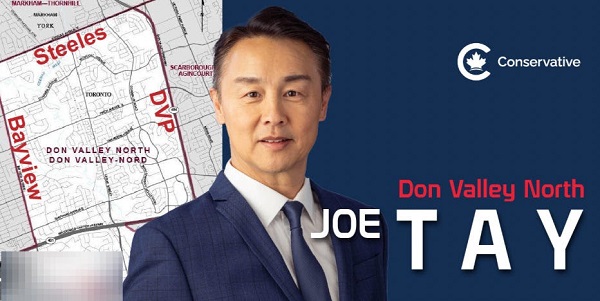
 2025 Federal Election1 day ago
2025 Federal Election1 day agoIn Defeat, Joe Tay’s Campaign Becomes a Flashpoint for Suspected Voter Intimidation in Canada
-

 Automotive2 days ago
Automotive2 days agoMajor automakers push congress to block California’s 2035 EV mandate
-

 Mental Health2 days ago
Mental Health2 days agoSuspect who killed 11 in Vancouver festival attack ID’d
-

 Alberta1 day ago
Alberta1 day agoPremier Danielle Smith responds to election of Liberal government
-

 COVID-1923 hours ago
COVID-1923 hours agoFreedom Convoy leaders’ sentencing judgment delayed, Crown wants them jailed for two years
-

 Banks23 hours ago
Banks23 hours agoTD Bank Account Closures Expose Chinese Hybrid Warfare Threat
-
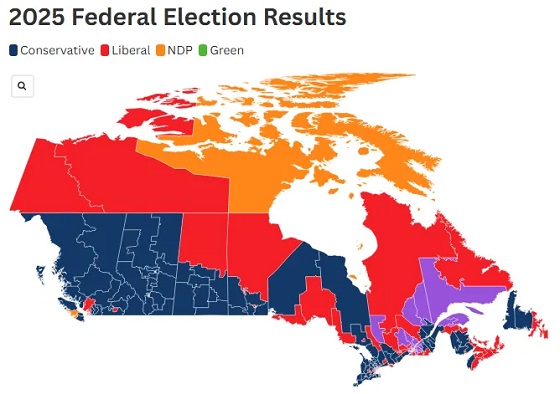
 2025 Federal Election22 hours ago
2025 Federal Election22 hours agoPost election…the chips fell where they fell
-

 Alberta21 hours ago
Alberta21 hours agoHours after Liberal election win, Alberta Prosperity Project drumming up interest in referendum


